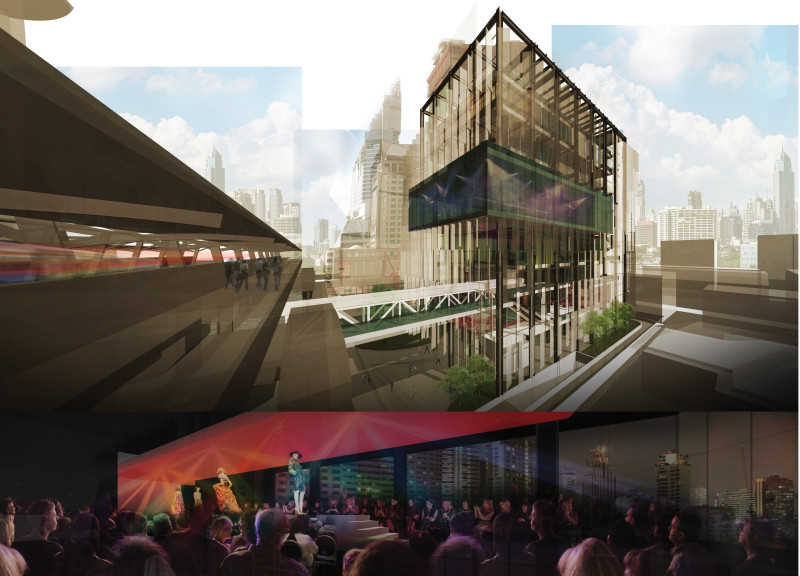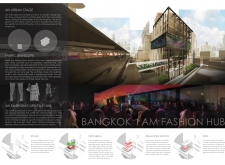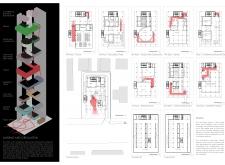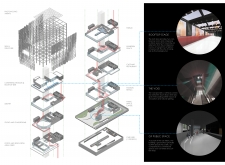5 key facts about this project
### Project Overview
The Bangkok Fashion Hub is located in a vibrant urban area, designed to function as a multifaceted space for the fashion sector and community activities. This facility emphasizes connectivity, dynamic spatial organization, and adaptability to the tropical climate of Bangkok. The design integrates with the existing urban landscape while offering innovative configurations, materials, and diverse functional zones that cater to both industry needs and public involvement.
### Spatial Strategy and Program Distribution
The architectural design employs a vertical stacking approach to efficiently utilize space and improve accessibility throughout various levels. The ground floor includes retail areas and public spaces, acting as a sensory entry point for visitors. The fourth floor features a forum designed for fashion shows and large gatherings, establishing a central identity for the hub. Above this, education spaces on the fifth floor support workshops and learning, strategically positioned to foster interaction between education and industry. Additionally, the rooftop area provides conference rooms and an open stage, enhancing connectivity to the urban skyline and offering outdoor space.
Circulation pathways are intentionally designed to facilitate fluid movement across the building, promoting interaction among visitors and users. Openings within the structure enable visibility of ongoing activities, encouraging public exploration and engagement.
### Materiality and Sustainability
The project employs a mix of traditional and contemporary materials to address both functional and climatic challenges. Notable materials include glass, which allows natural light penetration and maintains visual connections with the exterior; a steel frame that supports large spans and open spaces; and a fabric skin that provides shelter while maintaining visibility into the interior. Additionally, photovoltaic systems have been integrated to enhance energy efficiency, underscoring a commitment to sustainable design practices.
This architectural endeavor not only meets the functional demands of the fashion industry but also facilitates a broader interaction with the community, contributing to the cultural identity of Bangkok and promoting sustainable urban development.





















































